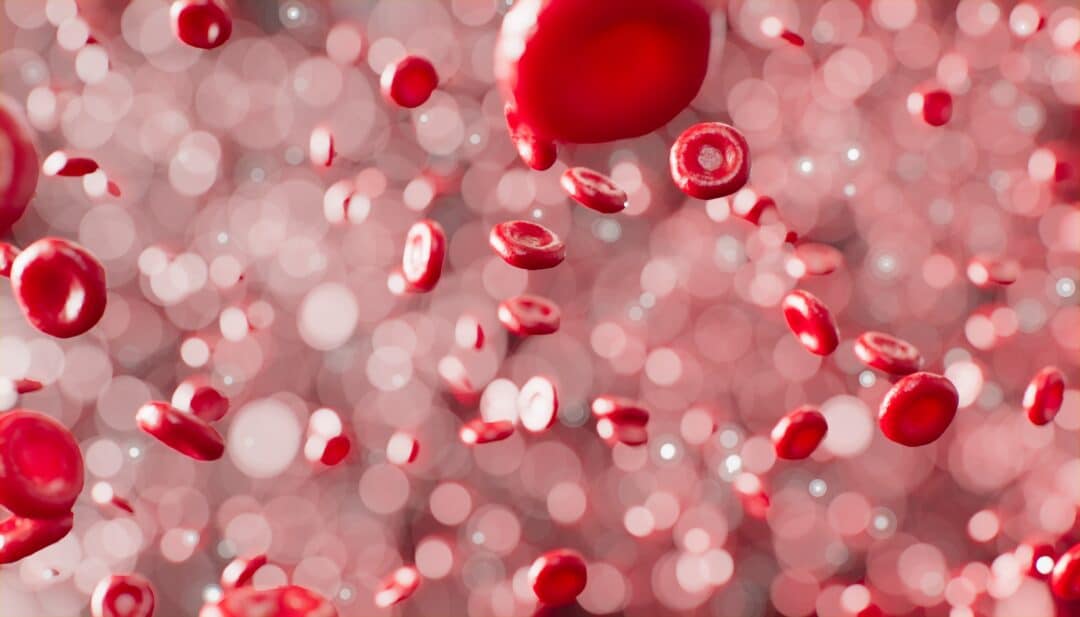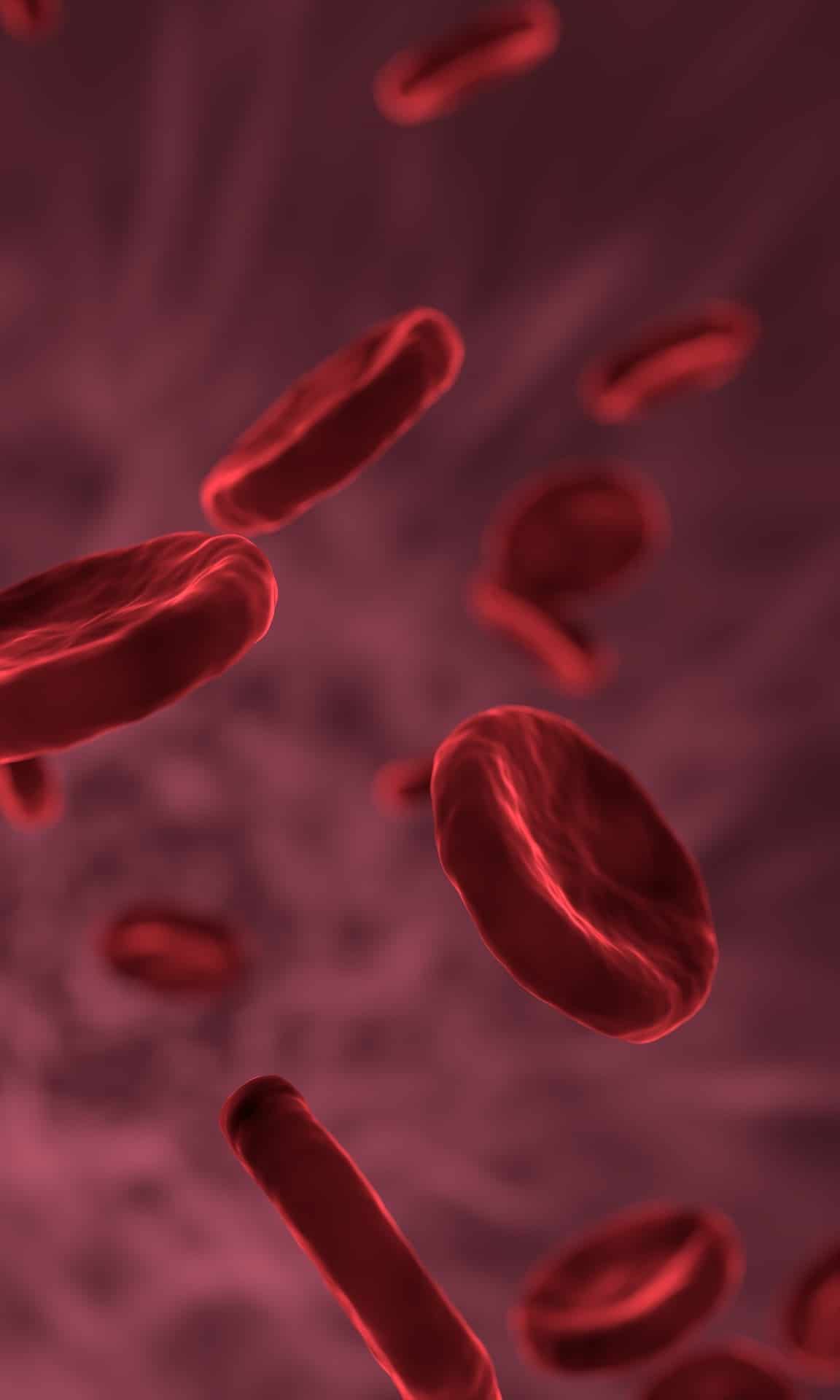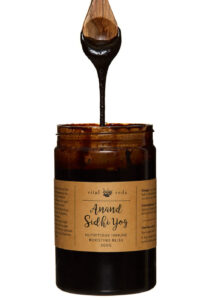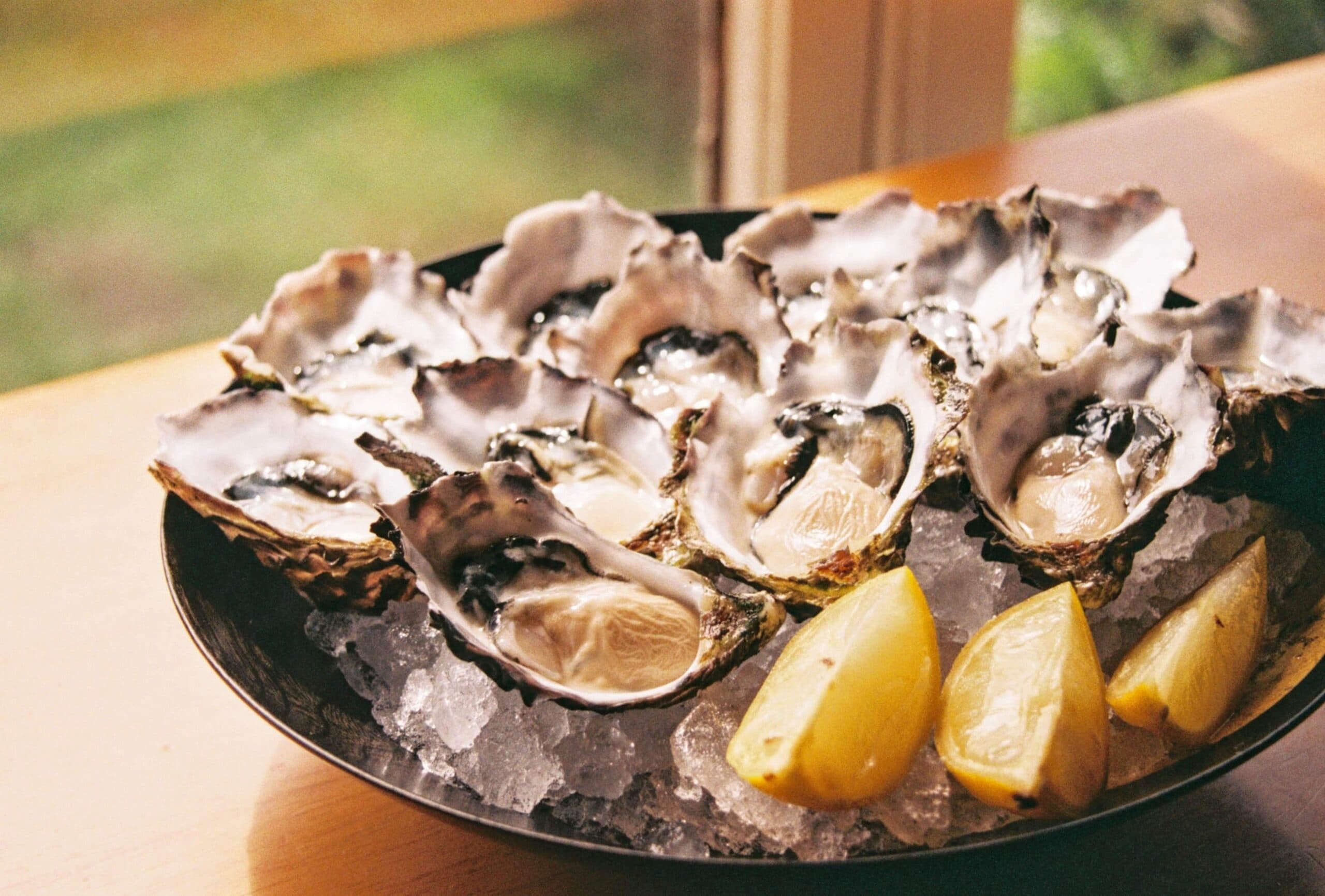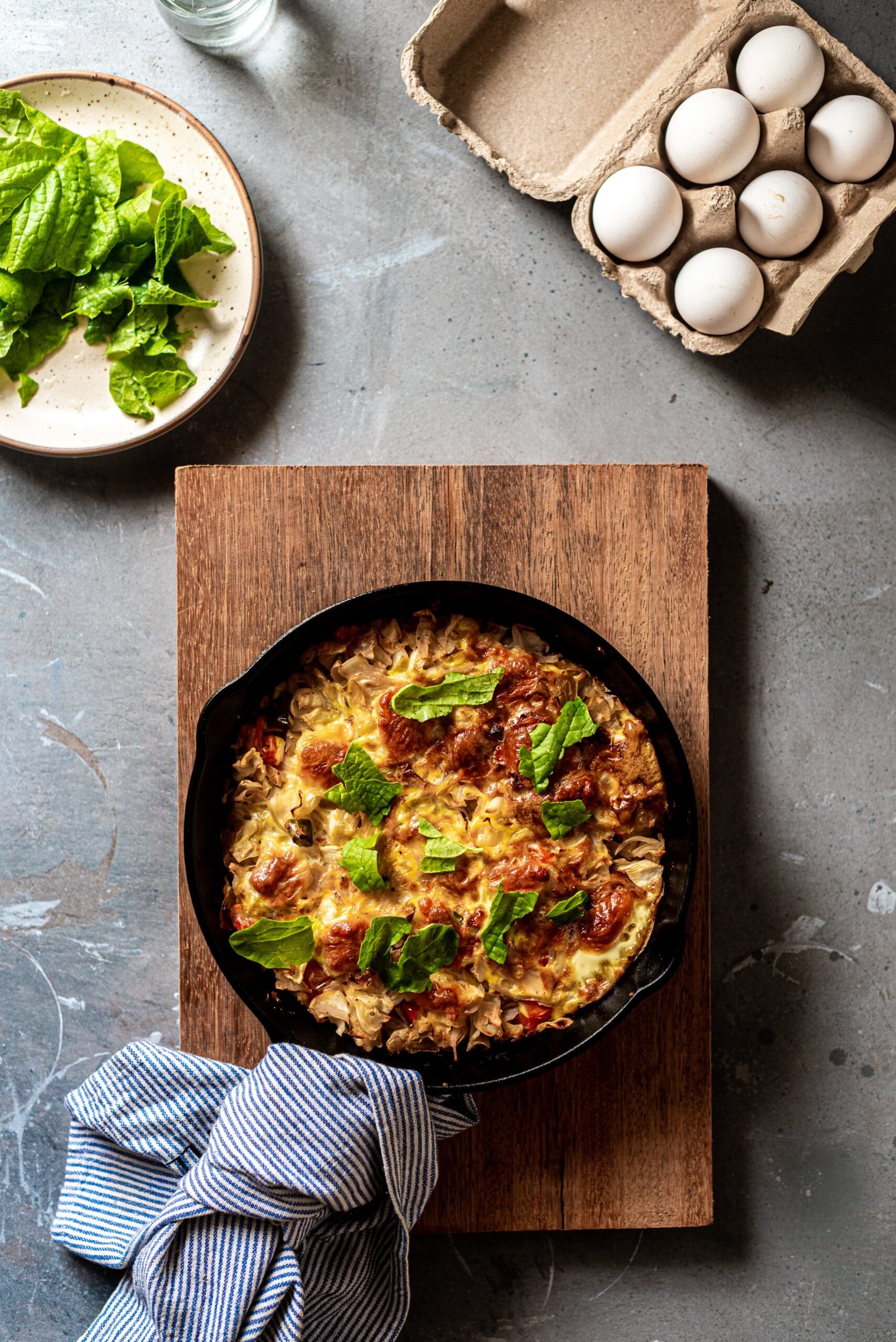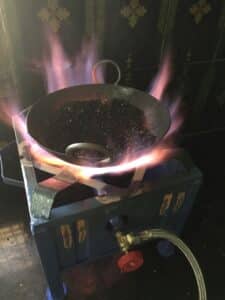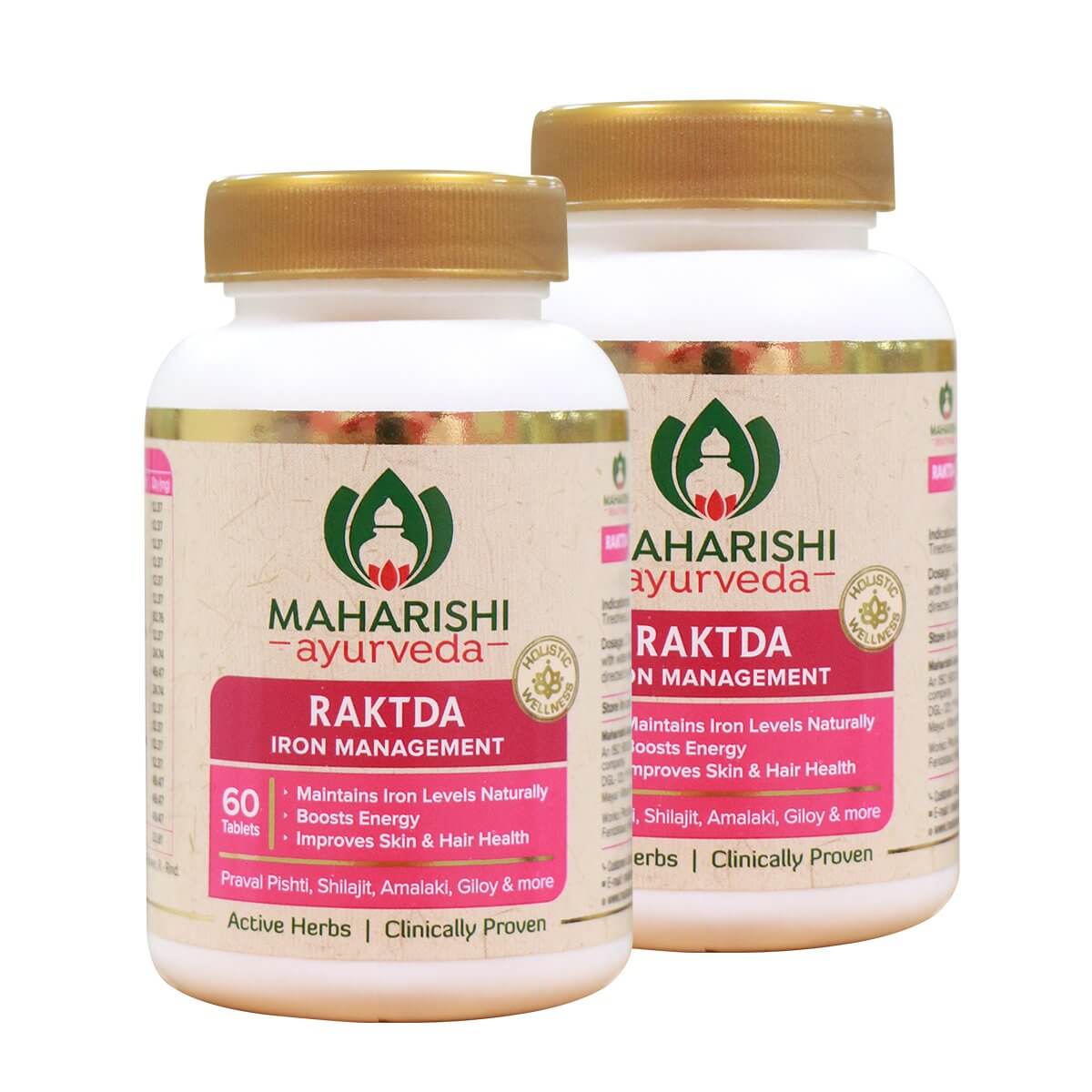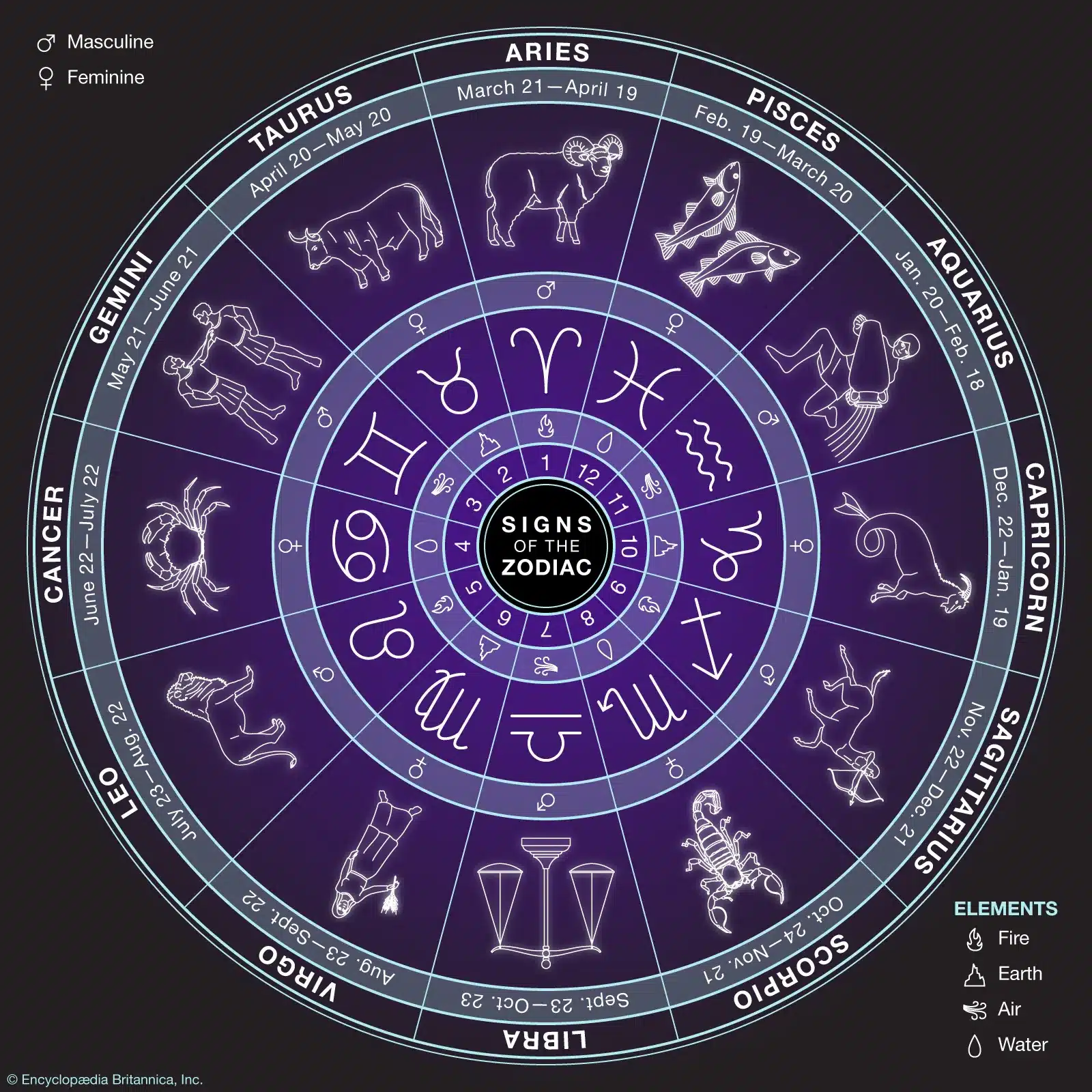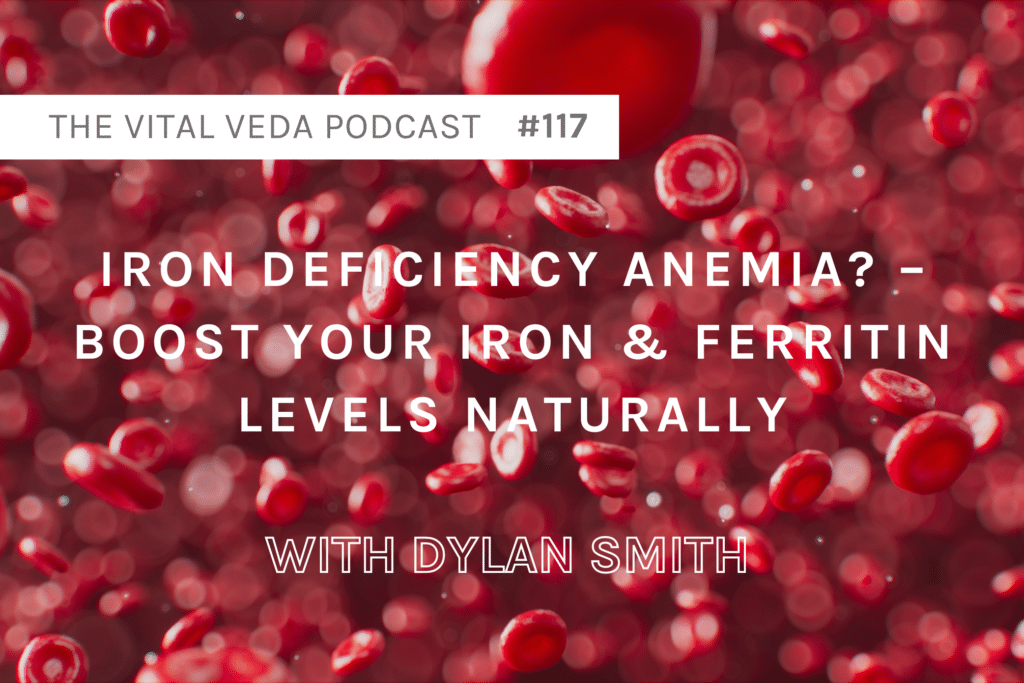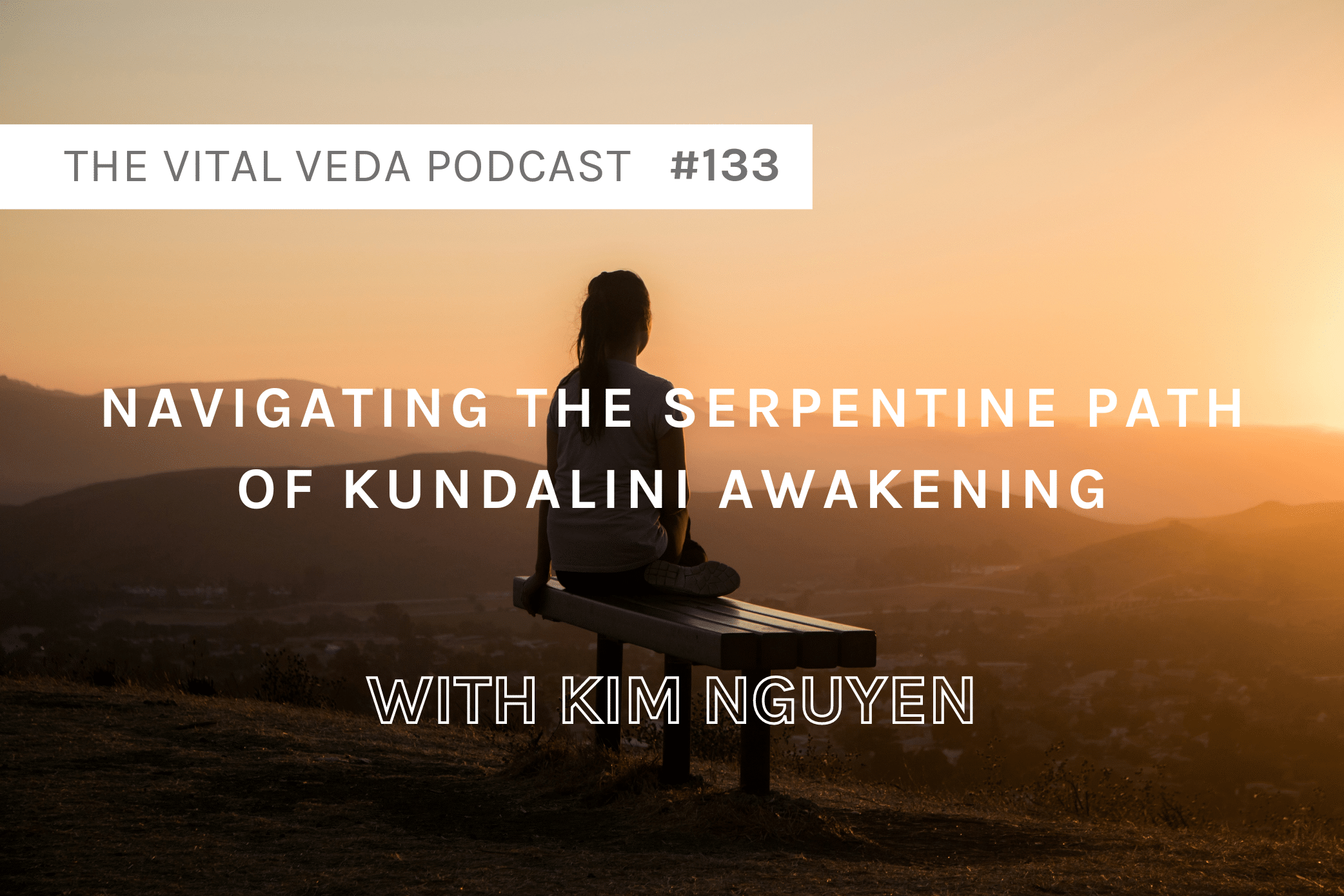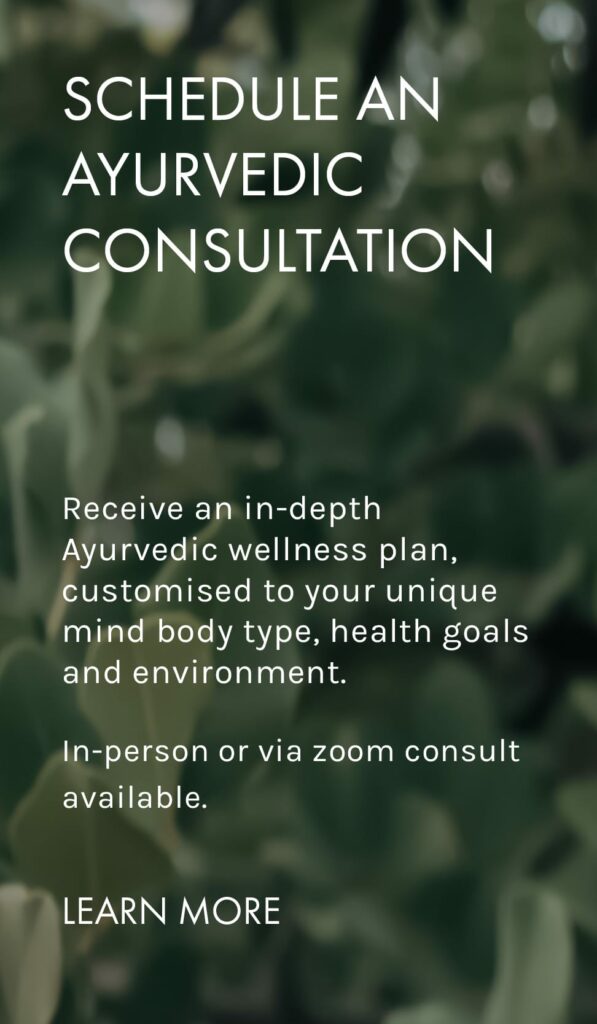The Ayurvedic Treatment & Understanding for Iron Deficiency
Iron is a mineral that serves several important biological functions, its main one being to carry oxygen throughout your body via your red blood cells (1).
Iron deficiency or low iron has become the biggest mineral deficiency in the world. (3)
About 20% of women, 50% of pregnant women, and 3% of men do not have enough iron in their bodies. (2)
Table of Contents
Understanding a Full Blood Evaluation (FBE): What is Haemoglobin, Red Blood Cells, Transferrin, Saturation & Ferritin?
Serum Iron
The amount of iron in your blood.
Haemoglobin
The body transports oxygen to cells via a protein called haemoglobin, which is mostly iron.
Low iron levels mean you’re unable to deliver oxygen or energy to the cells of your body. This is called anaemia, which means “without oxygen.”
Haemoglobin shows the quality of the blood, and perhaps the most important factor of a FBE.
Iron transferrin saturation
The delivery of iron to your tissues. Shows adequate entry of iron into the circulation.
If it is too high, (from over supplementation for example), the iron gets trapped, ironically.
Hepcidin: a hormone that regulates how your body uses iron, increases. This blocks iron entry into the circulation as a protective mechanism to not experience iron overload.
Blood Testing for Iron – The Truely Ideal Functional Levels of Iron & Ferritin
Remember, “normal” in standard blood tests is based on the “norm” or average of an unhealthy population.
Furthermore, conventional testing does not differentiate between pregnant women and non-pregnant people for ferritin! Which is ridiculous because pregnant women have a much higher dilution ratio as they have a lot more fluids during pregnancy, therefore don’t require as high levels as non-pregnant people.
Ferritin:
- Average normal ferritin levels range from 12 – 300 nanograms per milliliter of blood (ng/mL) for males
- 12 to 150 ng/mL for females. (8)
Most functional medical experts agree, the ideal ferritin levels are:
- 30 – 60 ng/mL (9) for non-pregnant people.
- 15-40 ng/mL in pregnancy trimester 2-3.
Above 80-100ng/ml is dangerous (see high iron and hemochromatosis below), and below 20 is too low for non-pregnant women.
Transferrin:
3-4 g/L (functional range).
Iron Transferrin Saturation:
20-30% (functional range)
Haemoglobin:
- Trimester 2 of pregnancy: over 105
- Trimester 3 of pregnancy: over 100
Also consider co-factors of iron like copper (important for the iron transport into the cells) and magnesium.
Remember, don’t be totally bound, attached and governed by blood work results. Blood tests are only one part of the diagnosis process. There are other areas of health to be assessed by a quality health practitioner. Book a private health consultation with our team from Vital Veda.
Symptoms of Low Iron
Symptoms of anaemia include:
-
Tiredness / fatigue – (don’t accept being tired and anxious)
-
Weakness
-
Low exercise tolerance or function
-
Breathlessness
-
Dizziness
-
Low immunity
-
Headaches
-
Stomach pain
-
Pale skin (in Ayurveda, the name for anemia is “Pāṇḍu” पाण्डु which means “pale white”)
-
Joint pain
-
Cognitive decline
-
Mood instability
-
Anxiety
-
Fast heart rate. (5, 6)
-
Thyroid conditions – You need iron to make T4. Low iron can leade to hypo or sluggish thyroid. For more information: Vital Veda Podcast #040 “Healing the Thyroid with Ayurveda” with Dr. Marianne Teitelbaum
-
Insulin resistance and type 2 diabetes – for more information: Vital Veda Podcast #026 “Understanding Diabetes & Blood Sugar, Self-Management, Nutritional Flexibility & Chronic Disease Blessings” with Drew Harrisberg
-
Stroke
-
Fatty liver
-
Cholesterol imbalances – for more information: Vital Veda Podcast #052 “The Great Cholesterol Myth | Dietary Fat Overview” with Dr. Jonny Bowden
-
Obesity
-
High blood pressure
-
Heart conditions.
Root Causes of Low Iron
Blood loss from heavy periods (menorrhagia) & hormonal imbalance
This is the most common cause. The functional medical ranges for healthy menstrual blood loss is 40-80mg per month. That is about 5-6 heavy pads per cycle.
- Hormonal imbalance is caused by:
- Plastics – eating from and storing foods and drinks in plastic
- Emotional and mental imbalances
- Poor quality meat
- Dryness in the body
- more factors…
-
Hormonal imbalance creates thick, uterine lining, which creates heavier period.
-
High oestrogen can also cause heavy periods.
-
This blood loss is driving the low iron.
Don’t treat the heavy blood loss with the Mirena IUD or contraceptive pill. Understand the root cause.
Those who are taking these band-aid approaches, don’t feel judged, but ask yourself: have you tried other options / treatments?
Type of Meat you Consume
Poor quality meat, which is majority of meat on the market can disrupt hormones and quality of blood.
Digestive Disorders
Including gut, microbial imbalances, food intolerances (which usually stem from poor digestion) and parasites.
The Relationship Between Vitamin C and Iron
Vitamin C boosts the absorption of iron, so low Vitamin C levels may be a causative factor of low iron and ferritin levels. (10,11,12)
Fruit, veggies and herbs to boost Vitamin C levels:
-
Amalaki (Indian Gooseberry) – learn all about this powerful medicinal fruit: “Amalaki (Embilica Officinalis): Uses & Benefits”
-
Davidson Plum (Native Australian plum)
-
Citrus fruits
-
Papaya
-
Broccoli
-
Kiwi fruit
-
Brussel sprouts
-
Mango
Ways To Naturally Boost Iron & Ferritin
The Ayurvedic treatment for iron deficiency consists of a holistic approach that will ultimately ensure that you not only incorporate proper sources of iron into your diet & lifestyle, but that your body also develops an enhanced capacity to assimilate iron from your food sources.
Iron Increasing Foods
Heme iron sources (animal products, easier to absorb iron), from highest to lower concentration: (1)
-
Oysters, mussels
-
Blood Cockle (iron levels range from 227.85 – 247.98 ppm) – This is very high source of iron so caution even needs to be taken. (16)
-
Goat or chicken liver
-
Sardines
-
Turkey
-
Ham
-
Fish like wild salmon
Non-heme iron sources (a little less easy to absorb, but is certainly possible to obtain sufficient iron), from highest to lower concentration:(1,13)
-
Bidens Pilosa (Cobblers peg/Farmer’s friend) – HUGE amounts of iron. Lightly heat the leaves in your food, don’t cook.
-
Moringa leaves – can used dried leaves or powder if fresh is not available. Do not cook for maximum iron, just sprinkle on and mix into hot dish.
-
Spinach – blanched in hot water and use. If eaten raw, iron is blocked by oxalates. Organic and fresh as possible is best.
-
Amaranth leaves (lightly cooked)
-
Seeds – pumpkin, sesame, squash and sunflower seeds.
-
Cooked beans and lentils (e.g. kidney beans, white beans, chickpeas, black beans)
-
Firm tofu (beware that soy is a phytoestrogen and may cause hormonal imbalance)
-
Dried figs (careful those with high blood sugar)
-
Baked potato with skin (organic. Beware, increases vata).
-
Plantain (green banana) cooked
-
Blackstrap molasses
-
Dried fruits (apricots, raisins, figs, dates, prunes etc)
-
Nuts (peanuts, pecans, walnuts, pistachios, roasted almonds, roasted cashews)
-
Warrigal greens (New Zealand spinach)
-
Broccoli
-
Pomegranate, papaya
-
Figs (fresh), kiwi fruit
Related article: Which leafy green vegetable has the highest amount of iron?
Soak Your Beans and Lentils
When you soak beans, a compound called phytic acid is released and removed from the bean or lentil.
If you do not soak the beans, this compound stays in the bean, and when ingested in the gastro-intestinal-tract, it latches onto iron and removes iron from the body.
Related article: Phytic Acid in Beans
Cooking in Iron Cookware
This is surprisingly a significant way to increase iron in the body.
And of course, it is an ancient Ayurvedic remedy for low iron!
When you cook food in iron vessels, it reacts with the metal surface and the iron gets released in the food.
“Food prepared in iron pots increases the haemoglobin concentration of anaemic/iron deficient individuals.” (14)
Foods that have a higher moisture content absorb the most iron.
For example, one study published in the Journal of the American Dietetic Association found that the iron content in 100 grams of spaghetti sauce jumped from 0.6 mg to 5.7 mg after being cooked in a cast iron pot! (15)
That iron load is equivalent to about 200 grams of cooked spinach!
So instead of adding 200 grams of cooked spinach into your lunch-time pasta for 52% of your recommended daily iron, just cook the pasta in an iron pot! (or add the spinach to double the iron content).
Other factors that boost the iron content of foods include:(15)
-
Longer cooking time in the iron vessel
-
Frequent stirring
-
Cooking iron-rich foods in an iron vessel.
-
Use cast iron, rather than the glazed iron.
Acidic foods may absorb more iron also, however sour or acidic foods may react with the iron to create an unpleasant metallic taste.
Iron vessels are also commonly used in certain Ayurvedic herbal preparations.
Related article: Cooked vs. Raw Food Diet: Transcend Food Fads | Dylan Smith #025
Self-Pulse: Self-Referral Technique and Healing Mechanism to Optimise Iron in the Body
Utilising the self-referral technique of Ayurvedic self-pulse reading can be an intimate and effective tool to gain insight into the levels and sufficiency of your own mineral levels and tissue health.
It is particularly useful to use while you experiment with various interventions like herbs, foods or cooking methods to monitor and gauge the changes in your pulse and hence, the changes in your mineral levels.
You may also share your self-research and insights with your Vaidya (Ayurvedic physician) who is truely versed in pulse knowledge to refine the process.
Self-pulse is a profound way to gain an insight into your mineral levels that has the potential to be far deeper and holistic than standard blood tests.
Ayurvedic Herbs that Boost Iron
When it comes to the Ayurvedic treatment for iron deficiency, herbal formulas become a key component in the holistic approach.
Here’s a list of our top Ayurvedic formulas to increase iron levels and enhance the body’s natural capacity to absorb & assimilate iron from food:
Iron Mineral – The Ayurvedic Way: Loha Bhasma (Iron Ash)
Bhasma is the highly acclaimed Ayurvedic process of purifying a mineral or metal, then calcifying it into ash, then utilising it in a herbal formulation for internal use.
This is a highly advanced and extensive process which creates an end-product that is very different to the original elemental metal.
Bhasmas have the ability to penetrate certain parts of the body very well.
Iron molecules are too large to enter the cells, but the bhasma is reduced to nano-particle size, so it can enter the minute channels and the body actually absorbs it well.
The purification method (śodana saṃskāra) of minerals is given extreme importance in Ayurveda. It not only makes the mineral and metal more hygienic and safe, but enhances the potency.
One of my favourite classical Ayurvedic formulations that involve loha bhasma (iron ash) is Punarnavadi Mandura (please speak to your qualified Ayurvedic practitioner before taking this).
This herbal preparation promotes cellular re-incarnation, revitalises and restores iron and the lymph system (rasa and rakta dhatu).
Blood Toner (Ayurvedic Raktda herb formula)
Raktda is an ayurvedic supplement that helps maintain optimum hemoglobin levels naturally, boosts energy, and is effective for iron deficiency / anemia.
It enhances your bodies ability to absorb iron naturally from your diet.
This formula is safe (and effective) in pregnancy.
A wonderful benefit of quality Ayurvedic herbs including iron bhasma is mostly they do not cause constipation or have side effects.
The Problem with Iron Supplementation (Nutraceuticals) & Medications
Iron supplementation is normally not the answer (long term) and will only lead to more oxidised iron in our system and further iron accumulation in the liver.
Just like iron rusts (oxidises), the same happens in your body with excess iron, which accelerates ageing and tissue degeneration.
Iron nutraceutical supplements aren’t the easiest to digest. The liver may find it hard to metabolise and it may cause some digestive issues like constipation.
Furthermore, the amount of iron in you standard iron supplements or medications like Maltofer and Ferrograd C contain over 100mg of iron!
Most people don’t absorb more than 40mg daily.
This excess iron creates iron trapping, which can perpetuate the problem of low iron.
This means to body is blocking or rejecting iron.
Then what ironically happens is that a doctor will double or triple dose the, and it makes the problem worse.
There was a study(18) that showed if you take iron supplements every second day, you get 34% more iron absorption. This is because the pressure on hepcidin is less, and the body is more accepting to the supplements.
Iron Infusions:
While iron infusions can provide rapid relief when someone is very iron deficient, it usually doesn’t fix the underlying problem.
In my clinic, I see clients who have been recommended or received iron infusions when their blood markers have not been so dangerously low.
A potential side effect of iron infusions is the strain and pressure on the kidneys. The kidneys will have to process and eliminate iron which has not undergone proper purification. At least when supplementing with tablets, the un-purified iron gets metabolised by the liver. In the case of intravenous supplementation, it is bypassing the liver and digestive process.
Furthermore, it is usually around 1000mg of iron per infusion! This incredibly high amount can cause damage or iron metabolic capacity, as well as serious side-effects in some people.
We need to look at why the body is not utilising iron properly
Bio-available copper and other minerals play a role. As do hormones, digestion, and absorption capacity.
I find assessing the overall metabolism, hormones and energy function of the individual with Ayurveda more effective than a reductionist approach of getting caught up with the numbers and levels of specific minerals.
Iron supplementation can be helpful to acutely address iron depletion or deficiency, but please consider using herbal support, diet and optimising digestion to increase iron levels first.
Book a private health consultation with Vital Veda to optimise your iron, blood and overall in an effective holistic approach.
Jyotish (Vedic Astrology) & Iron
Iron (loha) is associated with Saturn (Shani).
Wearing an iron ring on your middle finger (check with your local Jyotishi if this is right for you), using iron vessels to cook with, donating iron or using iron in other ways may enhance and pacify Saturn energy.
To learn more about the effects that Jyotish can have on your health listen to “Jyotish: Celestial Organisation of Life with Vedic Astrology | Blaine Watson Podcast #041″
Caution: High Iron Levels
Excess iron in most cases is even more harmful than low iron!
Hemochromatosis – the term for when your body absorbs too much iron from the foods you eat, can be toxic, cause free oxidative damage and even if overdosed can even be life-threatening.
Always get a blood test and consult a quality practitioner before starting any iron supplementation, espeically if you are pregnant.
Hemochromatosis Treatment:
Luckily, an effective treatment for hemochromatosis is very simple and free – donate blood according to your levels. This may have to be done regularly throughout the year.
One Ayurvedic treatment which also helps plus helps work at the root level is rakta mokṣana (“blood liberation”) by blood-letting treatments like leech therapy.
Turmeric in high amounts is also an effective chelator of iron, which can be used when iron is elevated. (9) Note, those with low iron should not reduce turmeric, it will actually help build blood when you need it, or clean the blood when you need that instead.
Related Listen
References
- https://www.webmd.com/diet/iron-rich-foods#1
- https://www.ncbi.nlm.nih.gov/pmc/articles/PMC3999603/
- https://pubmed.ncbi.nlm.nih.gov/17016951/
- Prevalence of Iron Deficiency and Iron Deficiency Anaemia in Adolescent Girls in a Tertiary Care Hospital
- https://www.healthline.com/nutrition/7-common-nutrient-deficiencies
- https://www.webmd.com/a-to-z-guides/iron-blood-test#1
- https://www.ncbi.nlm.nih.gov/pubmed/16500878
- https://pubmed.ncbi.nlm.nih.gov/16500878/
- https://www.functionalmedicineuniversity.com/public/1268.cfm
- https://www.ncbi.nlm.nih.gov/pmc/articles/PMC5898989/
- https://www.ncbi.nlm.nih.gov/pubmed/9196393
- Hurrell R, Egli I. (2010) Iron bioavailability and dietary reference values. Am J Clin Nutr;91:1461S-7S
- https://www.nutritionvalue.org/
- Food prepared in iron cooking pots as an intervention for reducing iron deficiency anaemia in developing countries: a systematic review
- https://goaskalice.columbia.edu/answered-questions/does-cooking-cast-iron-pots-and-pans-add-iron-our-food
- https://rjptonline.org/HTMLPaper.aspx?
- Stephanie Lowe, The Natural Nutritionist, AKA “The Iron Queen”.
- Iron absorption from supplements is greater with alternate day than with consecutive day dosing in iron-deficient anemic women

